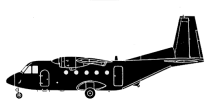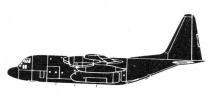Incident Overview

Description
The CASA 212 was contracted by the US Department of Defense to supply American forces deployed in remote areas of Afghanistan. After departure the did not follow the intended course of 170 degrees but instead flew to the northwest. The airplane entered a box canyon and struck the 14,650 foot level of Baba Mountain, which has a peak elevation of 16,739 feet. The flight was about 25 nm north of the typical route between Bagram and Farah. PROBABLE CAUSE: “The captains inappropriate decision to fly a nonstandard route and his failure to maintain adequate terrain clearance, which resulted in the inflight collision with mountainous terrain. Factors were the operators failure to require its flight crews to file and to fly a defined route of flight, the operators failure to ensure that the flight crews adhered to company policies and FAA and DoD Federal safety regulations, and the lack of in-country oversight by the FAA and the DoD of the operator. Contributing to the death of one of the passengers was the operators lack of flight-locating procedures and its failure to adequately mitigate the limited communications capability at remote sites.”
Source of Information
http://www.skybrary.aero/index.php/C212,_en-route,_Bamiyan_Afghanistan,_2004_(HF_LOC)http://www.skybrary.aero/index.php/C212,_en-route,_Bamiyan_Afghanistan,_2004_(HF_LOC)Primary Cause
Inadequate route adherence and lack of sufficient terrain clearance by the pilot, combined with operator negligence and insufficient oversight by the FAA and DoD.Inadequate route adherence and lack of sufficient terrain clearance by the pilot, combined with operator negligence and insufficient oversight by the FAA and DoD.Share on:




